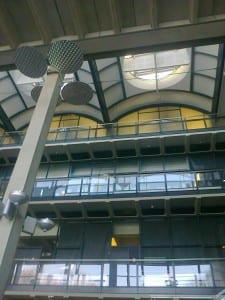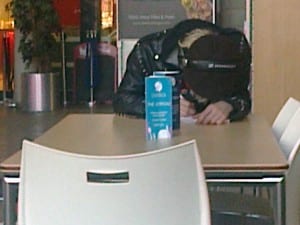‘Site Specificity arises precisely in uncertanties over the borders and limits of work and site…’ ((Kaye, N Site Specific Art, (2000) p.215))
Exploring The Collection and the connecting Usher Gallery, I can see many interesting spaces that have great potential to be unusual performance spaces, such as up on the balcony between the two education rooms, the space underneath the building outside, just name a few.
Looking at The Collection and The Usher Gallery its clearer how different they are, so depending on which type of performance you wish to create depends on what site you would chose. For example the Usher Gallery is more of a place to sit and reflect whereas The Collection is more of a social, education place. One that caught the group’s eye was that of the café, situated in The Collection.
The café is owned by the company Stokes, who has several other cafes around Lincoln. We were initially interested in the architecture of the café and liked the fact that the ceiling was several different heights with lights hanging from the ceiling which all levelled out at the same height. Even though some of the casing that surrounded these lights was broken I still thought it was pretty.
It is not often that I look at a space in so much detail but I was really noticing so much that I normally wouldn’t. Looking from outside into the space I was amazed to see that the alcoves inside looked like they could be framed by the windows because it was sectioned off in a way from the rest of the café, it was on a raised step and looked interesting from the outside and this gave us an initial idea to want to use these for part of our performance as they were interesting to view from inside and outside. Looking at the overall space outside it was interesting to look at how the two buildings could be connected and yet they are far apart creating an outside space which can be used for the café during summer.








